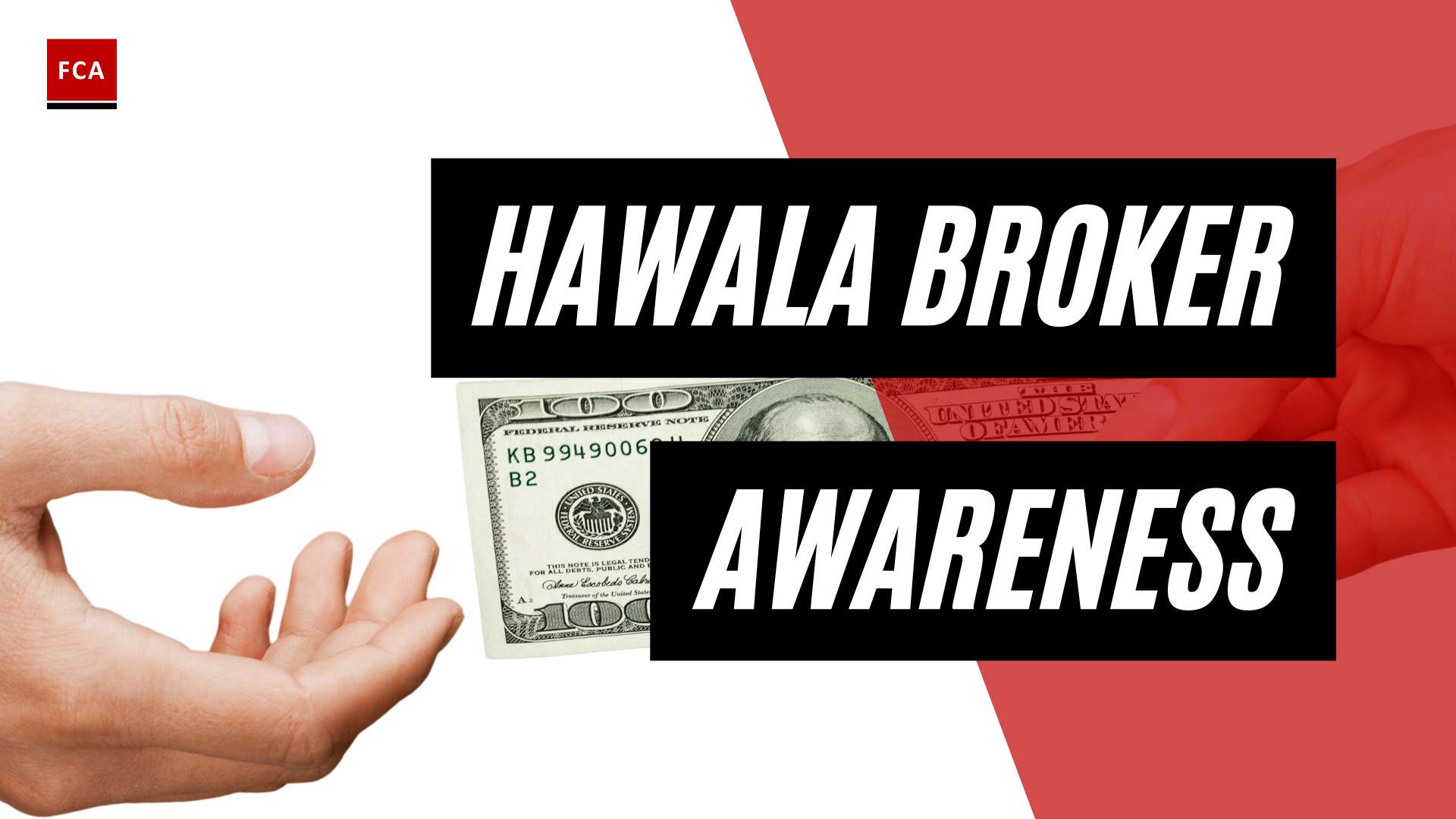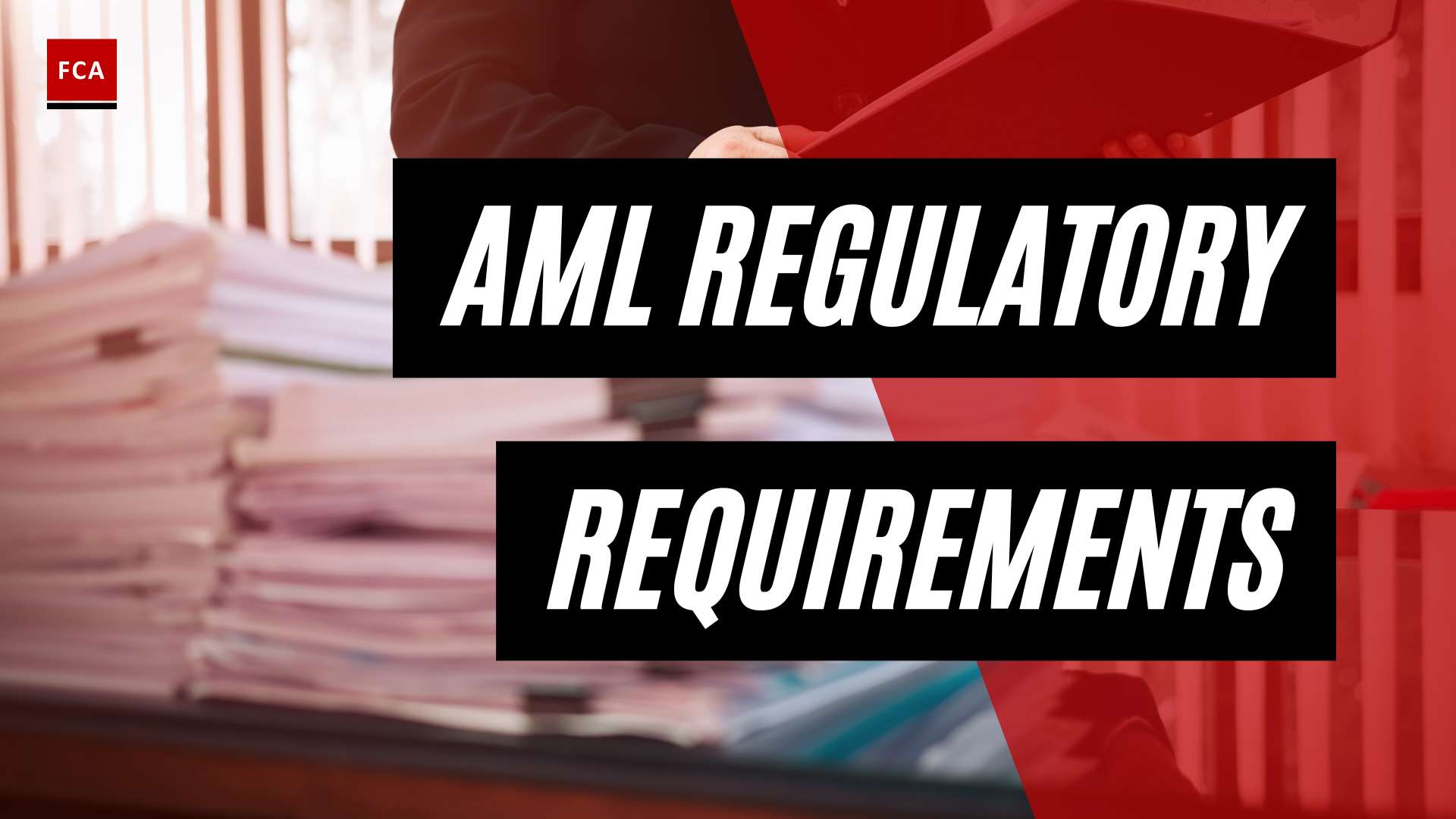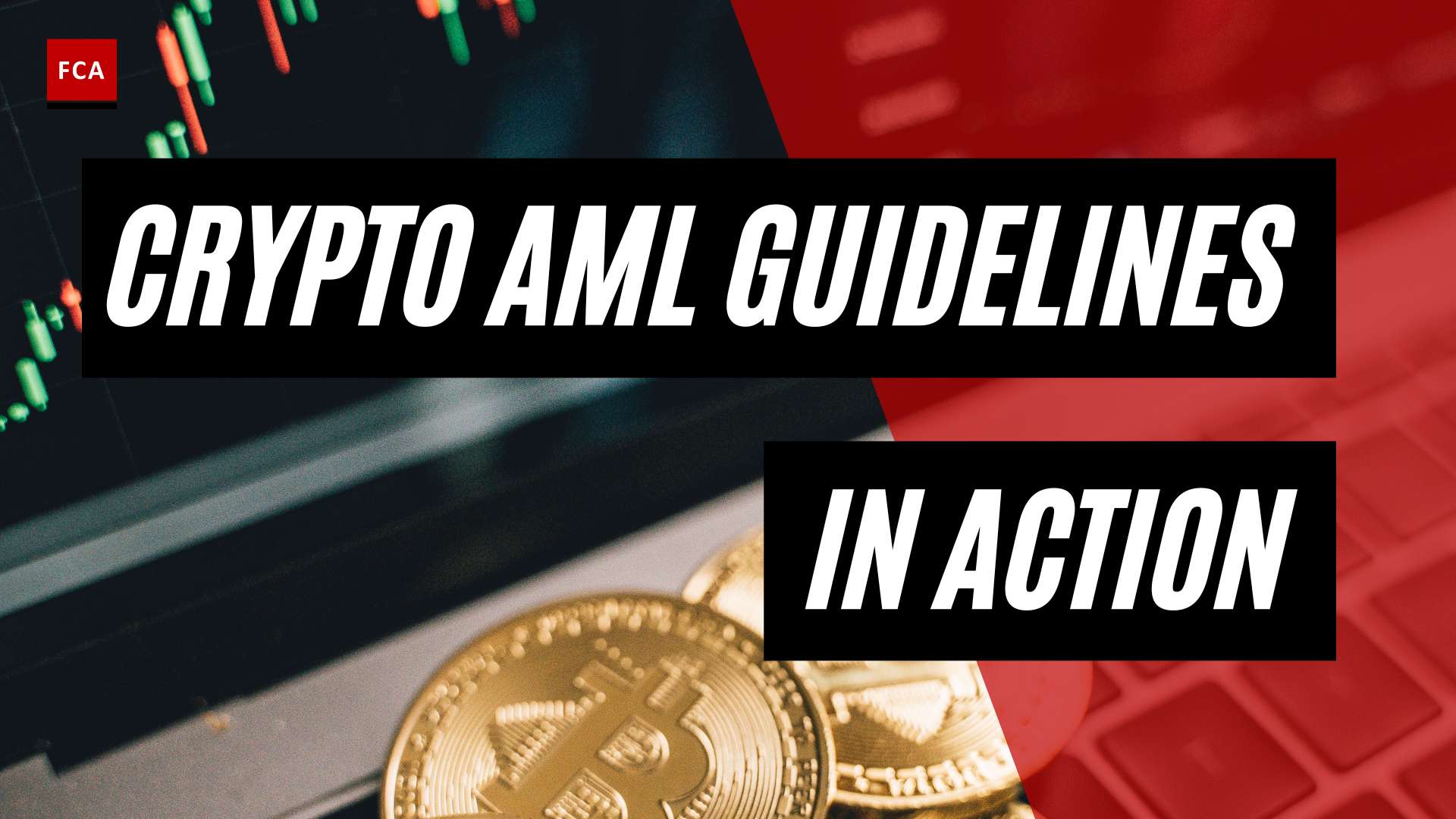Understanding AML Regulations for Blockchain
In the world of blockchain, Anti-Money Laundering (AML) regulations play a crucial role in ensuring the integrity and transparency of financial transactions. With the rise of blockchain technology, it is important to understand the significance of AML regulations and how they intersect with this innovative technology.
The Importance of AML Regulations
AML regulations are designed to combat money laundering, terrorist financing, and other financial crimes. Governments and financial institutions worldwide have introduced stringent AML regulations to foster trust among users and regulators, and to ensure transparency in blockchain transactions (Webisoft). Failure to adhere to these regulations can result in severe penalties, including fines, sanctions, and reputational damage.
By implementing AML regulations, governments and regulatory bodies aim to create a safer environment for organizations and individuals. These regulations require entities to conduct thorough due diligence on customers, monitor transactions for suspicious activities, and report any potential money laundering incidents.
Overview of Blockchain Technology
Blockchain technology, often associated with cryptocurrencies, has the potential to revolutionize AML compliance efforts. It is a distributed ledger that securely records and verifies transactions across multiple computers or nodes. Each transaction, or block, is added to a chain of previous transactions, creating an immutable and transparent record of all activities.
The decentralized nature of blockchain eliminates the need for intermediaries and enables peer-to-peer transactions. This technology provides several benefits for AML compliance, including enhanced security, transparency, and efficiency. It can streamline Know Your Customer (KYC) processes, reduce costs, and improve the sharing of customer identity data among financial institutions.
By utilizing blockchain technology, financial institutions can create a tamper-proof record of customer identity verification and transaction history. This enables auditors and regulators to obtain a transparent view of compliance efforts and promotes trust in the industry. The adoption of blockchain for AML and KYC compliance is expected to increase as institutions seek more efficient, secure, and transparent ways to comply with regulatory requirements and combat financial crime.
In the following sections, we will explore the challenges in AML compliance for blockchain, the specific AML regulations for virtual assets, compliance requirements for crypto exchanges, the implementation of blockchain for AML compliance, and global efforts in blockchain and AML.
Challenges in AML Compliance for Blockchain
As blockchain technology continues to be integrated into various industries, including the financial sector, it presents unique challenges in Anti-Money Laundering (AML) compliance. Two significant challenges in AML compliance for blockchain are the issues of anonymity and decentralization and the diversity of national policies.
Anonymity and Decentralization
One of the fundamental characteristics of blockchain technology is its decentralized nature. However, this decentralization poses challenges in AML compliance. Blockchain networks do not have authoritative institutions that verify the identities of participants and monitor suspicious transactions, making Know Your Customer (KYC) and Suspicious Transaction Reporting (STR) obligations non-functional.
The anonymity associated with blockchain transactions makes it challenging to identify the individuals involved in financial transactions. This lack of transparency can be exploited by malicious actors for money laundering and other illicit activities. Proper safeguards, such as anti-money laundering screening, need to be implemented to mitigate these risks. Without such measures, companies in the blockchain industry are at risk of fines, bans, and other severe consequences.
Diversity of National Policies
Another challenge in AML compliance for blockchain is the diversity of national policies relating to virtual assets. The global nature of blockchain technology means that different countries have varying regulations and approaches to AML compliance. This diversity makes it difficult to establish a cooperation regime for AML regulations on a global scale.
The lack of harmonization among AML regulations for virtual assets creates complexities for businesses operating in multiple jurisdictions. Companies need to navigate through different regulatory frameworks, adapt their compliance procedures, and ensure they meet the requirements of each jurisdiction they operate in. This can be a resource-intensive and time-consuming process, requiring constant monitoring and updates to compliance practices.
To address these challenges, collaboration among regulatory bodies and industry stakeholders is crucial. Efforts should be made to establish international standards and guidelines for AML compliance in the blockchain space. This would help create a more consistent regulatory environment, enhance transparency, and facilitate the detection and prevention of money laundering and other illicit activities.
In the next section, we will explore AML regulations specifically related to virtual assets, including the guidelines provided by the Financial Action Task Force (FATF) and the definition and role of virtual assets in the context of AML compliance.
AML Regulations for Virtual Assets
As the use of blockchain technology continues to grow, so does the need for effective anti-money laundering (AML) regulations. AML regulations for virtual assets aim to address the unique challenges and risks associated with cryptocurrencies and other digital assets. In this section, we will explore the FATF guidelines for virtual assets and the definition and role of virtual assets.
FATF Guidelines for Virtual Assets
In October 2018, the Financial Action Task Force (FATF) announced its intention to issue guidelines on virtual assets to combat money laundering and terrorist financing. These guidelines were developed to provide clarity and consistency in AML regulations for virtual assets (ASIL Insights).
The FATF guidelines require countries to implement AML and counter-terrorism financing (CFT) measures for virtual asset service providers (VASPs). VASPs include entities that engage in activities such as exchanging virtual assets for fiat currency, transferring virtual assets, and providing custodial wallets.
The guidelines emphasize the importance of implementing a risk-based approach, Know Your Customer (KYC) requirements, transaction monitoring, and reporting suspicious transactions. They also stress the need for international cooperation and information sharing to effectively combat money laundering and terrorist financing in the digital asset space.
Definition and Role of Virtual Assets
To understand AML regulations for virtual assets, it is crucial to define what virtual assets are and their role in the financial landscape. According to the FATF, a virtual asset is a digital representation of value that can be traded, transferred, or used for payment or investment purposes. Importantly, virtual assets do not have the status of legal tender in any jurisdiction.
Virtual assets play a significant role in blockchain technology, serving as a medium of exchange within decentralized networks. The core technology that enables virtual assets to function is the blockchain, a distributed ledger that records and verifies transactions. However, the decentralized nature of blockchain networks poses challenges for AML compliance, as there are no authoritative institutions to verify participant identities and monitor suspicious transactions.
Given the diverse nature of virtual assets and their potential for misuse in illicit activities, regulatory frameworks are necessary to ensure transparency, accountability, and the prevention of money laundering and terrorist financing. By implementing AML regulations for virtual assets, authorities aim to strike a balance between fostering innovation in the blockchain industry and safeguarding the integrity of the financial system.
As virtual assets continue to evolve, it is crucial for regulators, policymakers, and industry participants to keep pace with technological advancements and adapt AML regulations accordingly. By doing so, they can mitigate the risks associated with virtual assets and ensure the integrity and security of the global financial ecosystem.
Compliance Requirements for Crypto Exchanges
Cryptocurrency exchanges play a significant role in the digital asset ecosystem, but they also face strict Anti-Money Laundering (AML) regulations to ensure the integrity of financial transactions. In the United States and Canada, crypto exchanges must adhere to specific AML requirements to combat illicit activities and promote transparency in the industry.
AML Regulations in the United States
In the United States, cryptocurrency exchanges fall under the regulatory scope of the Bank Secrecy Act (BSA) and its related regulations. Providers are required to register with the Financial Crimes Enforcement Network (FinCEN) and implement an AML/CFT (Combating the Financing of Terrorism) program to detect and prevent money laundering activities. These programs include customer identification procedures, transaction monitoring, and the filing of suspicious activity reports (SARs) when necessary.
Additionally, the Securities and Exchange Commission (SEC) treats certain cryptocurrencies as securities, subjecting digital wallets and exchanges to securities laws. On the other hand, the Commodity Futures Trading Commission (CFTC) considers Bitcoin and other cryptocurrencies as commodities, allowing the public trading of cryptocurrency derivatives.
Recently, FinCEN proposed adjustments to the Travel Rule, which would introduce new compliance responsibilities for cryptocurrency exchanges. If implemented, exchanges would be required to submit SARs for transactions exceeding $10,000 and wallet owners would need to identify themselves when sending over $3,000 in a single transaction. These proposed changes aim to enhance transparency and strengthen the AML framework in the cryptocurrency industry.
AML Regulations in Canada
In Canada, virtual currency exchanges are subject to AML regulations outlined in the Proceeds of Crime (Money Laundering) and Terrorist Financing Act (PCMLTFA). Cryptocurrency exchanges are classified as Money Services Businesses (MSBs) and are required to register with the Financial Transactions and Reports Analysis Centre of Canada (FINTRAC).
The PCMLTFA amendment in 2019 brought virtual currency exchanges under the same regulatory framework as other MSBs, imposing due diligence and reporting obligations. Furthermore, the Virtual Currency Travel Rule, implemented in February 2020, mandates that all financial institutions and MSBs, including cryptocurrency exchanges, record cross-border cryptocurrency transactions to enhance transparency and combat money laundering.
By complying with these AML regulations, cryptocurrency exchanges in the United States and Canada contribute to the overall integrity of the financial system. They play a vital role in preventing illicit activities, such as money laundering and terrorist financing, while fostering trust among users and regulators alike.
For more information on AML regulations and compliance requirements in different jurisdictions, visit our article on AML regulations for blockchain.
Implementing Blockchain for AML Compliance
As the fight against money laundering intensifies, the implementation of blockchain technology has emerged as a potential game-changer in enhancing Anti-Money Laundering (AML) compliance. By utilizing blockchain, financial institutions can revolutionize their AML efforts, benefiting from increased transparency, security, and efficiency.
Benefits of Blockchain for AML
Blockchain technology offers several key advantages when it comes to AML compliance. First and foremost, the distributed ledger nature of blockchain allows for the secure and transparent storage and sharing of customer identity data. Financial institutions can leverage this feature to streamline their Know Your Customer (KYC) processes, reducing costs and enhancing security (Dentons).
By implementing blockchain, financial institutions can create a tamper-proof record of customer identity verification and transaction history. This not only facilitates compliance efforts but also provides auditors and regulators with a transparent view of the institution’s AML compliance measures. The immutability of the blockchain ledger ensures that the data stored within it cannot be altered, enhancing the credibility and reliability of the compliance records (Dentons).
Furthermore, blockchain technology offers increased efficiency and cost-effectiveness. By automating the verification process of customer identities, transaction monitoring, risk assessment, and compliance reporting, financial institutions can reduce the time and resources required for AML compliance. This enables them to focus on more strategic initiatives while maintaining robust compliance measures (AML UAE).
Challenges and Considerations
While the benefits of implementing blockchain for AML compliance are significant, there are also challenges and considerations that need to be addressed. One major challenge is the regulatory uncertainty surrounding blockchain technology. As AML regulations evolve, financial institutions must ensure that their blockchain implementations align with the changing regulatory landscape. Collaboration between industry stakeholders and regulators is essential to establish standards and best practices for blockchain-based AML compliance (Dentons).
Another consideration is the interoperability of blockchain systems with existing legacy systems. Financial institutions must carefully plan and execute the integration of blockchain technology to ensure seamless operations and data synchronization. Additionally, data privacy concerns must be addressed to protect sensitive customer information while leveraging the benefits of blockchain’s transparency (Dentons).
It is important for financial institutions to conduct thorough risk assessments and due diligence when selecting blockchain solutions for AML compliance. Choosing the appropriate blockchain platform, ensuring data accuracy and integrity, and mitigating potential vulnerabilities are critical factors to consider in the implementation process.
Despite the challenges, the adoption of blockchain technology for AML compliance is expected to increase in the financial services sector. The benefits of increased efficiency, security, and transparency align with the objectives of combating financial crime and meeting regulatory requirements. Ongoing developments in blockchain solutions, coupled with industry-wide collaboration, hold promise for further advancements in AML compliance efforts.
As the landscape of AML regulations continues to evolve, financial institutions must stay abreast of the latest advancements in blockchain technology and assess its potential for enhancing their AML compliance measures. By embracing blockchain, institutions can strengthen their AML frameworks, protect themselves against money laundering risks, and contribute to the global fight against financial crime.
Global Efforts in Blockchain and AML
As anti-money laundering (AML) regulations continue to evolve, countries around the world are exploring the incorporation of blockchain technology to enhance AML compliance. One notable example is the United Arab Emirates (UAE), which has emerged as a leader in adopting blockchain for AML purposes.
UAE’s Incorporation of Blockchain
According to the recent Global Cryptocurrency AML Report 2021, the UAE ranks among the top 10 countries actively working towards incorporating blockchain technology in AML regulations to combat financial crimes. The UAE recognizes the potential of blockchain technology to revolutionize AML compliance by offering a transparent, secure, and immutable method for automating various compliance processes.
By adopting blockchain technology, financial institutions in the UAE can streamline the process of Know Your Customer (KYC) checks, reducing the time and resources required for due diligence while enhancing the accuracy and security of customer data. Blockchain-enabled KYC processes can provide a secure and efficient way to verify customer identities, minimizing the risk of identity theft and fraud.
Moreover, blockchain technology facilitates the automation of transaction monitoring, risk assessment, and compliance reporting, which are critical components of AML regulations. Financial institutions can leverage the transparency and immutability of blockchain to enhance the accuracy and effectiveness of their AML monitoring efforts (AML UAE). By recording transactions on a distributed ledger, suspicious activities can be easily identified and investigated, aiding in the prevention and detection of money laundering and terrorist financing.
Promising Results and Developments
The use of blockchain technology in AML compliance has shown promising results in the UAE and beyond. Financial institutions that have adopted blockchain solutions for AML purposes have experienced improved efficiency, reduced operational costs, increased accuracy, and enhanced security in combating money laundering and terrorist financing activities (AML UAE). The automation of compliance processes through blockchain reduces the reliance on manual procedures, minimizing the risks associated with human error and fraud.
Recent developments in blockchain solutions have further empowered financial institutions to comply with AML regulations effectively. Advanced technologies, such as artificial intelligence and machine learning, are being integrated with blockchain to enhance transaction monitoring and risk assessment capabilities. These developments enable financial institutions to detect and respond to AML risks more efficiently, strengthening their overall AML compliance frameworks.
As countries like the UAE continue to incorporate blockchain technology into their AML regulations, the global fight against money laundering and financial crimes receives a significant boost. The application of blockchain in AML compliance offers a transformative approach that improves transparency, efficiency, and security in combating illicit activities. It is an exciting development that holds great potential for the future of AML efforts worldwide.








